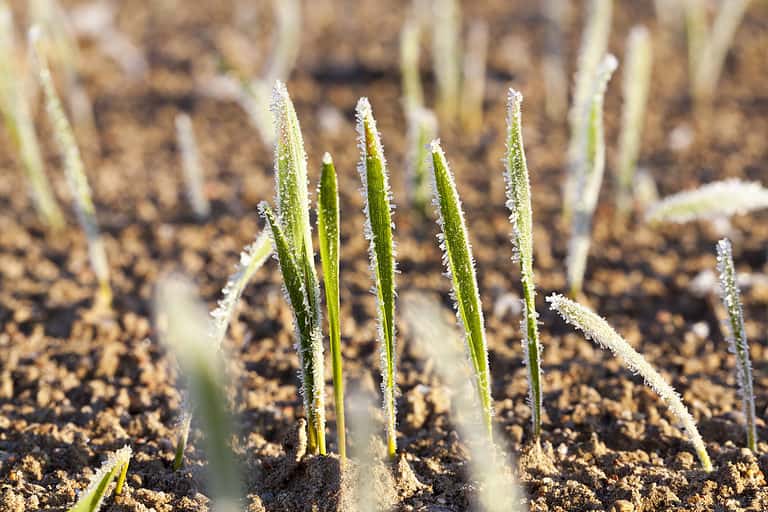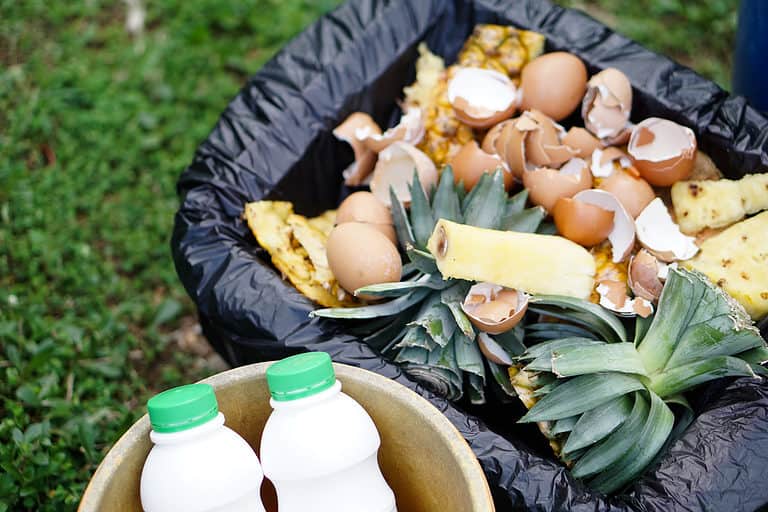Best Grow Lights for Thriving Indoor Plants in 2024
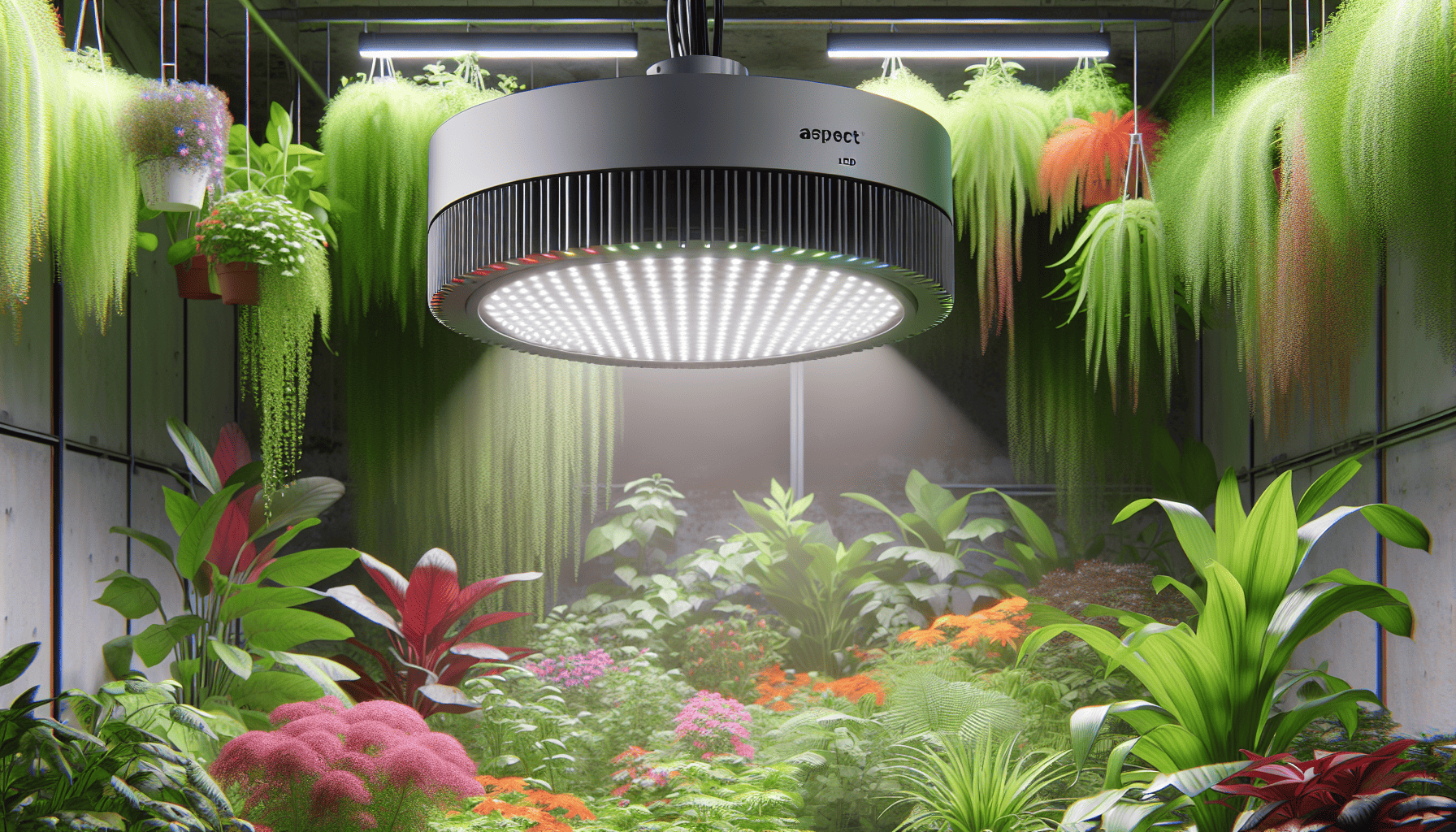
Choosing the best grow lights is pivotal for your indoor plants’ success. This guide zeroes in on reliable, high-performance options evaluated for features, efficiency, and space compatibility. Find succinct insights to illuminate your gardening journey.
If you are new to hydroponics or looking to learn more please check out our Ultimate Guide to Hydroponics.
Top 5 Grow Lights for Different Gardening Needs
Choosing the right grow light can make all the difference in your indoor garden. The best light for you depends on your specific gardening needs, from the types of plants you are growing to the available space for light installation. Here are some options to consider:
Best All-Around: VITA Grow Bulb
Best Premium Choice: Aspect Hanging Grow Light
Best for Space-Deprived Areas: Uplift Grow Planter
Best for Herb Gardens: Smart Grow Frame
Best Energy-Efficient: LBW LED Grow Light
Each of these options offers unique benefits and features. The upcoming sections will provide detailed information about each light, aiding you in making a suitable choice based on your gardening needs.
VITA Grow Bulb: The Best All-Around Indoor Grow Light
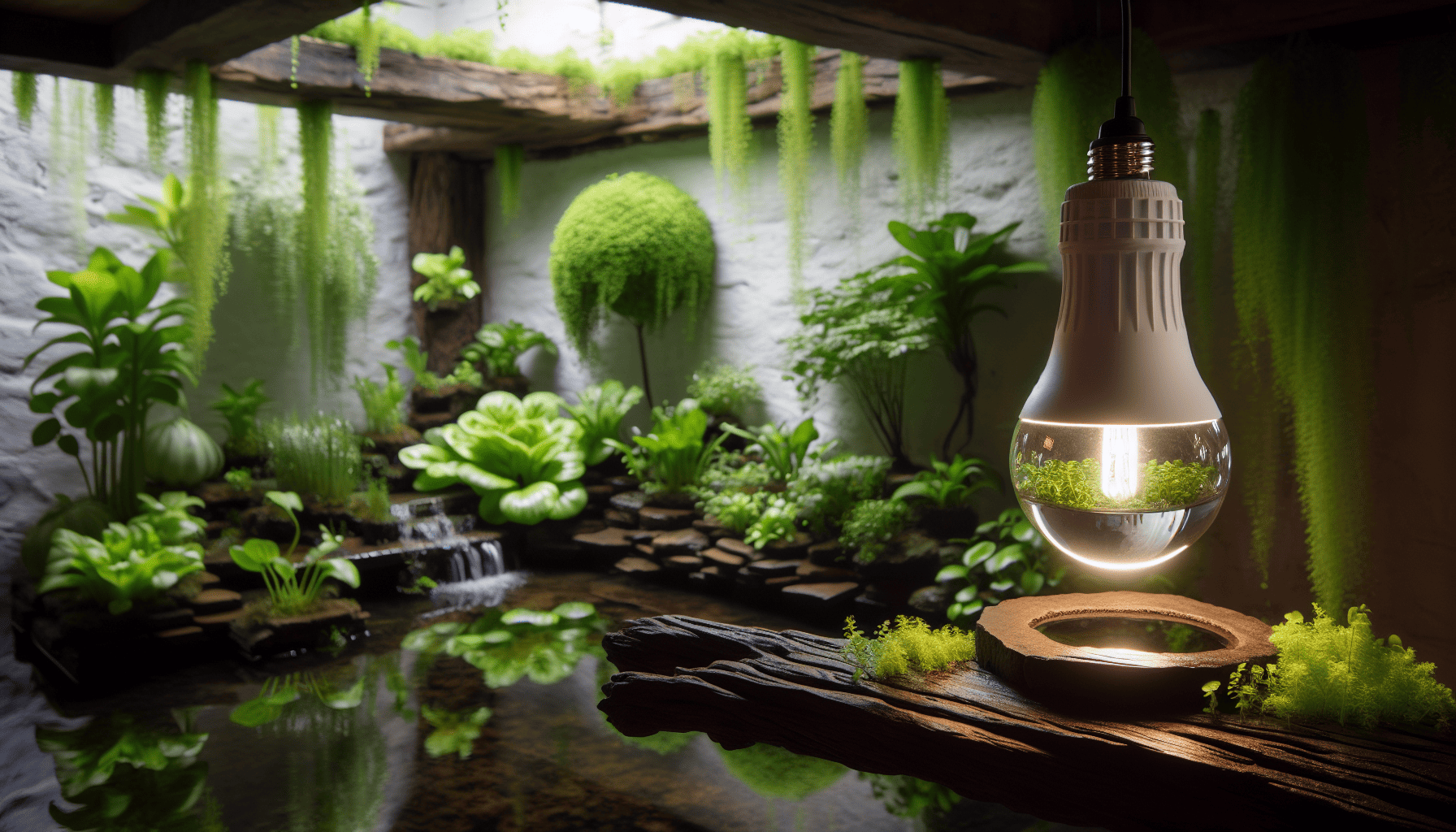
Price: $99.99
Specifications
Power Consumption: 100W
Coverage Area: 2’ x 2’
Number of LEDs: 100
Wavelength Range: 380nm – 780nm
Pros:
Optimal spectrum of light for plants
Energy-efficient and low heat output
Long lifespan
Easy to install
Cons:
Relatively expensive compared to other grow lights
The VITA Grow Bulb serves as a flexible option for various indoor plants. Its features include:
Meticulously calibrated photosynthetic spectrum that promotes healthy plant growth
Accommodates high light plants that necessitate red spectrum light for flowering and fruit production
Warm white glow that boosts plant growth and provides brilliant illumination
This makes it a versatile option for various indoor growing needs.
Although slightly more expensive than other grow lights, the VITA Grow Bulb’s durability and energy-saving features justify the investment. It’s also easy to install, making it a convenient choice for both novice and seasoned indoor gardeners.
Rating: Price: 4/5 Design: 4.5/5 Performance: 5/5 Overall: 4.5/5
Aspect Hanging Grow Light: The Premium Choice for Indoor Gardeners

Price: $179.95
Specifications
Lumens: 1500lm
Power: 20 Watts
Color temperature: 3000k
Cord length: 15’ fabric cord
Dimensions: 4”x4”x6”
Lifespan: 90,000 hours
Pros of full-spectrum LED lights:
The light emitted includes all wavelengths in the visible spectrum, which can mimic natural sunlight
Suitable for various applications, including indoor gardening and aquarium lighting
Supports a wide range of plants
Durable solid aluminum construction
Easy installation and adjustment
Cons:
Pricey compared to other options on the market
The Aspect Hanging Grow Light is a high-end choice designed for the selective indoor gardener. It offers the following features:
Supports the growth of a wide range of plants, including houseplants and small trees
Versatile addition to any indoor garden
Warm white light enhances the ambiance of any room
Durable solid aluminum construction ensures long-term use
Though more expensive than other grow lights, the Aspect Hanging Grow Light provides great value for its price. Its innovative photosynthetic spectrum promotes plant health, and it is easy to install and adjust, making it a favorite among indoor gardeners.
Rating: Price: 3.5/5 Design: 5/5 Performance: 5/5 Overall: 4.5/5
Uplift Grow Planter: The Best Solution for Space-Deprived Areas
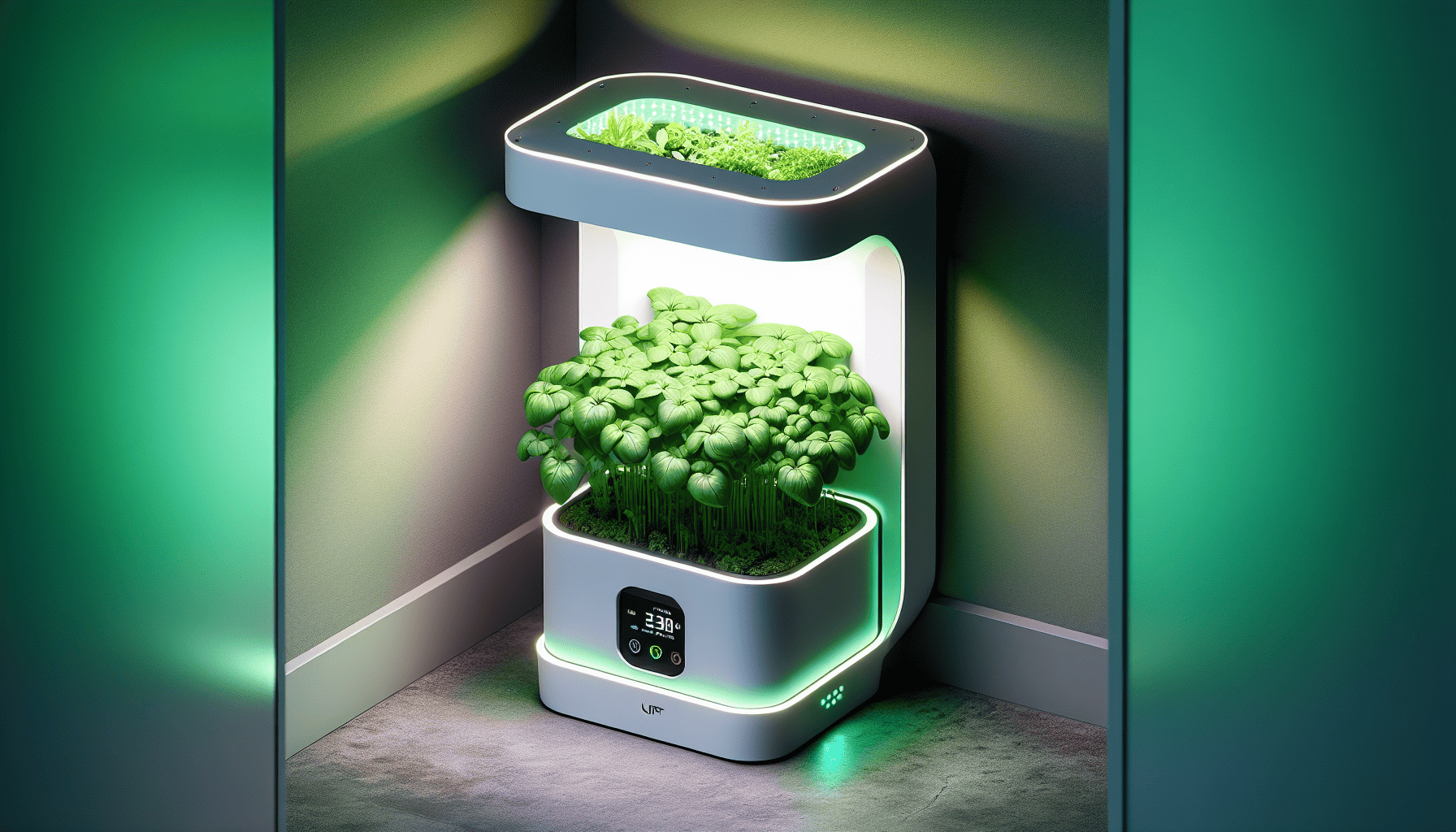
Price: $229.00
Specifications
Size: 43” tall with a 10” pot
Light Type: Full-Spectrum LEDs
Light Color: 4000K Natural White Light
Lumen Output: 1480
Warranty: 3 Years
Pros:
Built-in full-spectrum grow light
Elevated stand base
Watertight design
Constructed from rust-resistant materials
Cons:
Slightly larger footprint may not suit all spaces
The Uplift Grow Planter is an excellent choice for gardeners constrained by space. It offers the following features:
Built-in full-spectrum grow light
Elevated stand base
Watertight design
Rust-resistant materials
These features enhance its suitability for small spaces. The integrated grow light has low power consumption, a long lifespan, and offers full-spectrum light suitable for a variety of plant types.
Though its size may not fit all areas, the Uplift Grow Planter is designed to meet the needs of tropical houseplants, providing a full-spectrum grow light and a setup that supports plants requiring a warm and consistent light setting.
Rating: Price: 4/5 Design: 4.5/5 Performance: 5/5 Overall: 4.5/5
Smart Grow Frame: The Best Grow Light for Herb Gardens
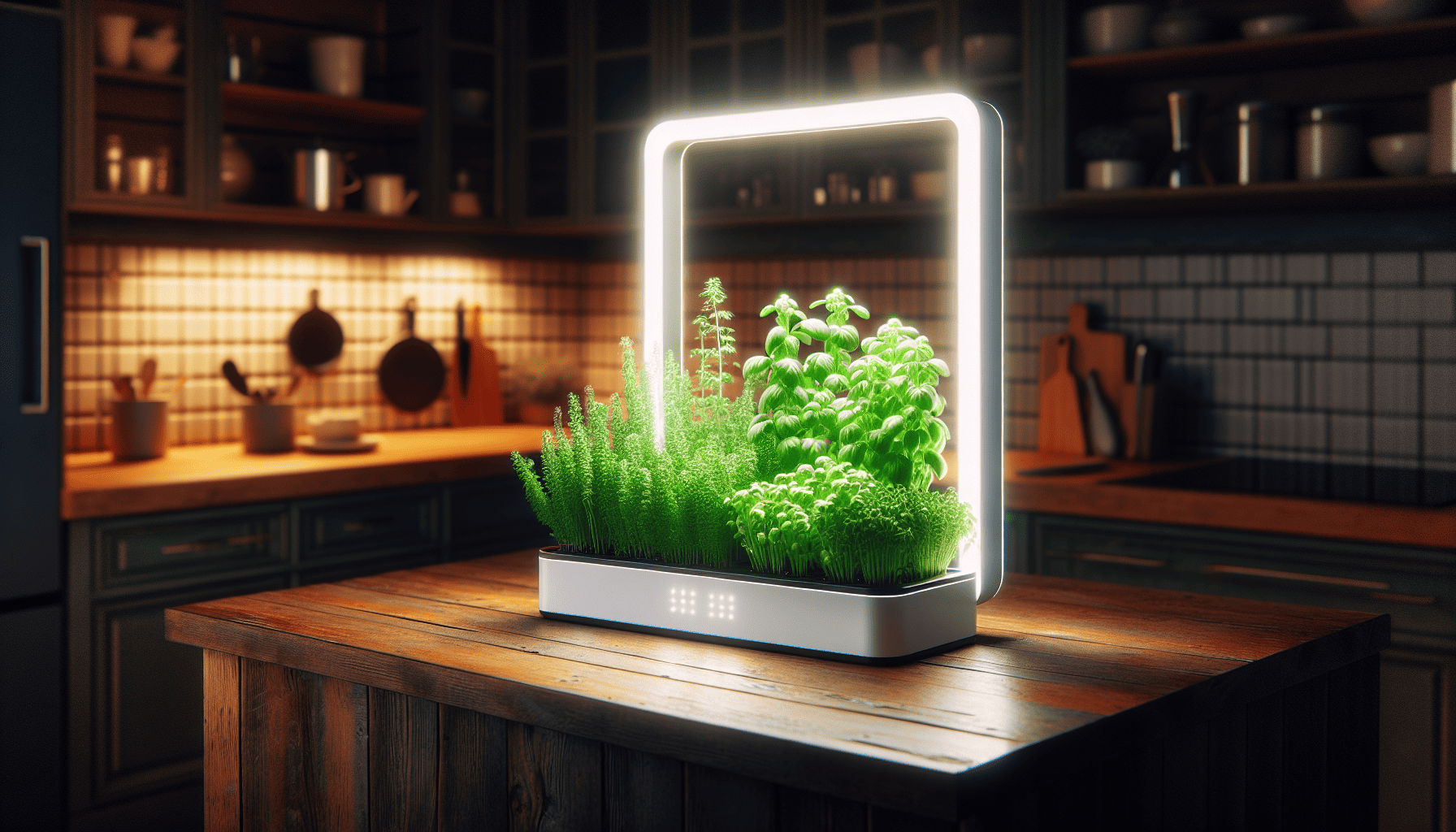
Price: $219.00
Specifications:
Color: Matte Black
Size: 20.8” x 17” x 5.5”
Weight: 8lbs
LEDs: 92+ CRI Dimmable Full-Spectrum LEDs
Light Output: 1480 Lumen
Power Adapter: 27W power adapter w/ 9’ cord
Warranty: 3 Year Warranty
Pros:
Full-spectrum LEDs
Wall-mounted design for space efficiency
Decorative design
Integrated grow light
Cons:
Pricey for a specialized grow light
The Smart Grow Frame is ideally suited for herb gardens. Here are some of its features:
Full-spectrum LEDs emit a natural white light at 4000 Kelvin and 1480 lumens
Wall-mounted design enhances space efficiency
Decorative design makes it a stylish addition to any indoor garden
These features make the Smart Grow Frame particularly suitable for herb gardens.
Although the cost may seem high for a specialized grow light, the Smart Grow Frame is a worthwhile investment for herb gardeners. Its features include:
High-quality build
Integrated grow light
High ratings from customers, with an average quality rating of 4.6 out of 5 and a value rating of 4.3 out of 5.
Rating: Price: 4/5 Design: 5/5 Performance: 5/5 Overall: 4.7/5
LBW LED Grow Light: The Best Energy-Efficient Grow Light
Price: $99.99
Specifications
Power Consumption: 100W
Coverage Area: 2’ x 2’
Number of LEDs: 100
Wavelength Range: 380nm – 780nm
Pros:
Optimal spectrum of light for plants
Energy-efficient and low heat output
Long lifespan
Easy to install
Cons:
Relatively expensive compared to other grow lights
The LBW LED Grow Light:
Is a power-saving option designed for indoor gardening
Uses advanced LED technology that consumes less energy and produces less heat compared to traditional grow lights
Provides the optimal spectrum of light for plants, promoting healthy growth and maximizing yields.
Though it may be more expensive than other grow lights, the durability and power efficiency of the LBW LED Grow Light makes it a valuable long-term investment. It’s also easy to install, making it a convenient choice for both novice and seasoned indoor gardeners.
Rating: Price: 4/5 Design: 4.5/5 Performance: 5/5 Overall: 4.5/5
Understanding the Importance of Grow Lights
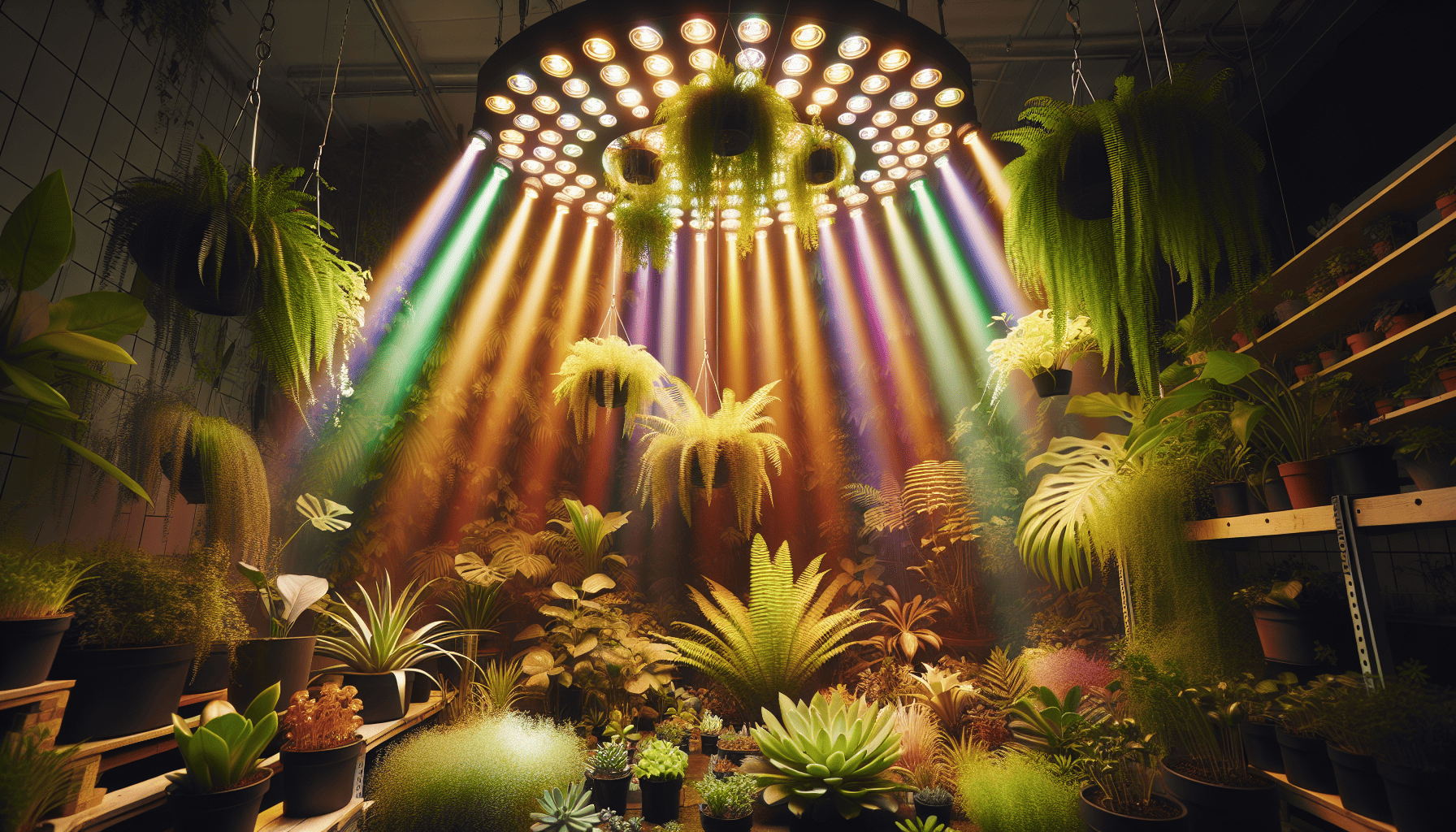
Grow lights, like LED variants, are synthetic electric lights engineered to imitate natural light and bolster plant growth. They are essential for indoor plants as they provide the required light spectrum for photosynthesis and promote healthy growth, compensating for the lack of natural sunlight indoors.
Various grow lights provide a range of light that encourages photosynthesis. Full-spectrum grow lights emit multiple colors in varying degrees, mimicking the sun and promoting healthier growth. It is important to understand how light impacts plant development in order to select appropriate grow light types to maximize plant growth and yields.
Indications that plants require more light comprise of pale or yellow leaves, elongated spindly stems, and a general difficulty in growth or flowering. To ensure effective usage, grow lights, including blue light, should be positioned in close proximity to the plants to offer optimal light, utilizing bulbs such as white LEDs that deliver the complete spectrum and intensity of light essential for plant well-being.
Understanding the importance of grow lights allows gardeners to provide their indoor plants with suitable artificial lighting, promoting healthy plant growth through effective photosynthesis and healthy indoor growth.
Choosing the Right Type of Grow Light
Grow lights, including hydroponic grow lights, come in different types such as LED, HID, and fluorescent. Each type presents distinct advantages and drawbacks, tailored to specific gardening requirements like the plant variety and the available space for light installation.
Fluorescent grow lights, a type of fluorescent lights, are particularly known for their efficiency, low heat generation, and suitability for indoor herb and small plant cultivation. Their energy-efficient nature and ability to emit minimal heat make them an ideal choice.
HID grow lights are well-suited for indoor horticulture and are available in various types, including:
HPS
MH
CMH
Double Ended T5
They offer the advantage of penetrating into the lower foliage of plants and emitting significant light. However, it is important to maintain a distance between the lights and plant canopies due to heat emission, particularly with HPS lights.
LED grow lights offer the following advantages:
Fine-tuning the light spectrum to create optimal conditions for plants at different growth stages
Long endurance and less prone to burn out due to the absence of filaments
Dimmable to efficiently manage light provision and save power.
When selecting grow lights, gardeners should take into account factors like:
the light’s coverage area
bulb efficiency
the unique features and constraints of each grow light, like the unavailability of very low brightness settings on HID lights or the necessary wattage to reach a specific lumen output.
Key Factors to Consider When Buying Grow Lights
Increased energy efficiency reduces the wattage required to produce the same level of lumens. LED lights use less energy to generate the same amount of light than other options, with 600-watt lights being particularly efficient. Additionally, a 600W LED lamp may have an actual input power of only around 350–400 watts, demonstrating enhanced efficiency due to LED technology.
When choosing grow lights, it is crucial to consider the dimensions of the grow space to determine how much light is needed in the form of appropriate size and quantity of lights. Maintaining the optimal light intensity per square foot, typically at 32 watts per square foot, is essential to prevent excessive light that could have adverse effects on plant growth.
Grow lights can vary in their heat output, which can affect their lifespan. Here are some things to consider:
Lights with a higher heat output tend to have a shorter lifespan and may require more frequent replacements.
LED bulbs with low heat output are known to last longer.
Some LED bulbs incorporate an aluminum heat sink for efficient heat dissipation, which can help prolong their lifespan.
PPFD, or photosynthetic photon flux density, quantifies the amount of light emitted by a lamp. The nominal wattage, typically mentioned in the lamp’s name, signifies the associated wattage of the product, although the actual wattage used may be lower. It is advisable to use a chip with a minimum of 3 watts for sufficient illumination.
Lumens quantify the overall light emission of a source, whereas watts indicate the energy usage. Although lumens can indicate the level of brightness, the true energy efficiency is better evaluated by the light’s wattage and the quality of light it offers for photosynthesis.
Tips to Maximize the Use of Your Grow Lights
A comprehensive knowledge of distinct plant light needs, including the use of bright light, is necessary to optimize the use of grow lights, promoting ideal plant growth and yield.
Single-ended lights offer the advantage of being able to be placed closer to plants as they operate at cooler temperatures. This feature makes them particularly suitable for hobby growers seeking to maximize space and light distribution.
Cleaning grow lights and ballasts is necessary as even slight dust accumulation can significantly impact light output and consequently affect plant growth and yield. It is recommended to clean grow lights and ballasts after each harvest in order to prevent dust buildup and preserve the maximum light output for optimal plant growth.
Summary
To sum up, indoor gardening requires a keen understanding of the specific light needs of various plants and the type of grow lights that can optimally meet these needs. From LED to HID and fluorescent lights, the range of grow lights available in the market today caters to specific gardening requirements, offering distinct advantages and drawbacks.
By understanding the importance of grow lights, how to choose the right type of light, key factors to consider when buying grow lights, and tips to maximize their use, you can ensure your indoor garden thrives, promoting healthy plant growth and maximizing yields. Happy gardening!
Frequently Asked Questions
Which type of light is best for growing plants?
For growing plants, lights that provide a full spectrum, such as LED lights, are the best choice. Violet-blue light promotes plant growth, while red light also promotes growth.
What is the best wattage for grow lights?
The best wattage for grow lights is generally 20-30 watts per square foot for flowering plants, while for vegetative plants, aim for 25-50 watts per square foot. More than this can lead to issues like bleaching and burning.
Are LED grow lights better than fluorescent?
Yes, LED grow lights are generally considered better than fluorescent lights due to their higher efficiency, durability, versatility, and cost-saving advantages over time.
What are grow lights and why are they essential for indoor plants?
Grow lights are necessary for indoor plants because they simulate natural light and provide the necessary light spectrum for photosynthesis, promoting healthy growth when natural sunlight is lacking indoors.
Which grow light is best for space-deprived areas?
The Uplift Grow Planter with a built-in full-spectrum grow light is ideal for space-deprived areas due to its compact design and rust-resistant materials. Try it out for a space-saving and effective solution.

